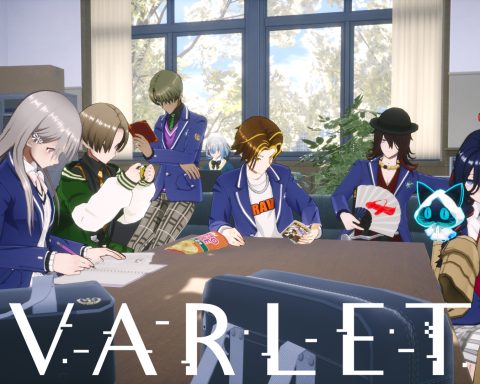Heroes of Might & Magic is a dead franchise. As beloved as it is, Ubisoft now owns it, and has absolutely no interest, whatsoever, in indulging niche strategy RPG things (unless the execs can ruin it by turning it into a live service). What that means is that the market is wide-open for another player to be the “spiritual successor” to the Heroes property. Enter Fort Triumph. If the developer hadn’t tried to be funny, this blend of XCOM and Heroes could have been a classic.
As anyone who has played a Heroes of Might & Magic game knows, that series was all about building up armies of fantasy critters to then go and beat up on other armies. Fort Triumph, on the other hand, is about recruiting small bands of heroes, who fight in tactical skirmishes with other small groups, just like in XCOM. The shift here is subtle but pervasive; in the cities that dot the landscape, you’ll be investing in buildings, just like you did in the old Heroes games, only you’ll be doing that to yield combat boost to your heroes, rather than enable you to recruit units of skeletons, paladins, or orcs. Rather than send ever-growing armies to scour the landscape for loot and battles, you’ll instead handle never more than a few bands of heroes. Finally, when losing a couple units of soldiers isn’t a big deal in Heroes (you can always replace them), it’s a massive deal in Fort Triumph, because the game has been built around permadeath, just as in XCOM.
At first, I wasn’t sure how all of this would come together, but mechanically, Fort Triumph is… well, a triumph. On the field of battle, there are all kinds of tactical options, from perennial XCOM favourites such as the “overwatch” stance for ranged units, right through to the ability to conjure magical tornadoes that knock over trees and damage units standing behind them. Taking control of the field of battle is critical with Fort Triumph, and you’ll be making liberal use of kicks, throws, and other actions that displace and move enemy units around, to manipulate the battlefield to protect your weak units and push them into the firing line of your big hitters.
There’s also a really nice levelling system for characters, with a library of abilities per character class that can be optionally unlocked on levelling up. These abilities can be common, uncommon, and rare, and when you “draw” and apply a rare one to a character, they become infinitely more valuable to your combat squad, which makes losing them all the more painful to the cause. It’s a neat system because the randomisation does mean that two characters can develop very differently, even if they’re within the same class.
The best way to enjoy Fort Triumph is in Skirmish mode, where you can pick your faction (from four, though the differences are mostly aesthetic), and tackle up to three opponents on randomly-drawn maps. Because the tactical nuance is there, and the AI is workable, there’s lot of replay value in Fort Triumph. The one big problem skirmish mode faces is that there are far fewer hero character classes than there are unit types in Heroes of Might & Magic, and army building was always a joy in these games. However, the skills variety and expansive inventory/equipment system does help to mitigate this to an extent.
Unfortunately, the story mode, which is ostensibly the main one, is just terrible. You’re doing the same thing that you do in skirmishes, but with narrative objectives that are agony to deal with. Look, humour is subjective, and we all like a bit of bad humour at times. Dungeons & Dragons and other tabletop fantasy RPGs are the ultimate breeding ground for it, too. It’s a bunch of people sitting around playing a game that is fundamentally, joyfully silly. Anyone taking that seriously and trying to craft Tolkienesque masterpieces really isn’t playing it right. What I’m saying here is that we’ve all enjoyed Summoner Geeks, and Summoner Geeks was great. Nearly two decades ago.
Since then we’ve seen so many games with exactly the same humour as Fort Triumph. We’ve seen the same unsubtly self-aware thing that hams up fantasy tropes as though they were the first one to discover that Tolkien can be twisted so that it’s funny. Fort Triumph is the tabletop RPG that we’ve played over, and over, and over, and over again, and it’s getting harder to laugh at the same jokes. The best Fort Triumph gets is the RPG equivalent of “A Priest Walks Into a Bar” jokes (“A Dragon Walks Into A Bar”, perhaps), and while it’s told with a twee glee, you’ve got to be really (really) sheltered not to have seen this sense of humour a million times over by now.
The other thing that I struggle with is the aesthetic. I know World Of Warcraft drove a certain approach to character design that has permeated just about every western fantasy game’s aesthetic since, both serious and satirical, but we’re at the point now where the colourfully cartoony visuals are as generic on the eyes as dour military shooters. There’s nothing distinctive about how Fort Triumph looks – it’s just a copy-paste of fantasy best practices at this point.
Despite these criticisms, there’s a lot to like about Fort Triumph. XCOM is a good thing, and Heroes of Might & Magic is a good thing. Mashing those two good things together in a way that does justice to them both is a noble effort by the developers, and the presence of skirmish mode does mean that the poorly conceived narrative can be ignored. You’ll bounce off Fort Triumph quickly enough, but it’s a good time while it lasts.








